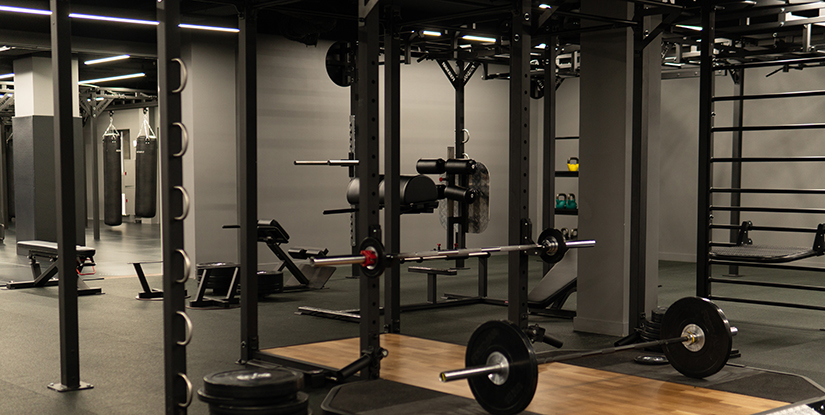Fitness Equipment Guide: Choosing, Installing, and Maintaining Gym Gear

Introduction to Fitness Equipment
Fitness equipment is a strategic investment in health, performance, and longevity. Whether outfitting a home gym, a corporate wellness space, or a commercial facility, selecting the right equipment requires understanding functional goals, space constraints, budget, and maintenance demands. This guide provides a professional overview of categories, selection criteria, setup recommendations, and lifecycle management to help organizations and individuals optimize return on investment and user outcomes.
Core Categories and Use Cases
-
Cardiovascular Equipment: Treadmills, ellipticals, rowing machines, and stationary bikes support endurance, calorie burn, and cardiovascular health.
-
Strength Training: Free weights, barbells, kettlebells, dumbbells, power racks, and selectorized machines enable hypertrophy, strength, and functional movement training.
-
Functional Training and Accessories: Battle ropes, plyo boxes, suspension trainers, medicine balls, and agility equipment facilitate sport-specific and multi-planar movement development.
-
Recovery and Mobility: Foam rollers, massage guns, stretching stations, and vibration platforms aid recovery, flexibility, and injury prevention.
-
Smart and Connected Devices: Wearables, interactive bikes, and integrated consoles that track performance and provide programming for motivation and data-driven adjustments.
How to Choose Equipment
-
Define Objectives: Identify whether the priority is weight loss, strength, general fitness, rehabilitation, or athletic performance. Equipment should align with primary goals.
-
Assess Space and Layout: Measure floor area, ceiling height, door widths, and weight-bearing capacity. Account for clear zones to ensure safety and movement flow.
-
Consider User Demographics: Age, fitness level, and accessibility needs inform choices—adjustable machines, step height, and handle ergonomics matter.
-
Prioritize Durability and Warranty: Commercial-grade equipment has higher upfront costs but longer lifecycles and service support; home models can be cost-effective if usage frequency is moderate.
-
Test Before Purchase: Whenever possible, trial equipment for feel, adjustability, and user interface. Ergonomics can differ drastically across models.
Budgeting and Cost Considerations
Budget planning should include purchase price, delivery and installation, flooring and electrical modifications, and ongoing maintenance. For commercial facilities, factor in depreciation, spare parts, and potential revenue from memberships or classes. For home users, prioritize modular investments that can scale—e.g., adjustable dumbbells, a compact squat rack, and a good-quality cardio machine.
Maintenance and Safety Protocols
-
Routine Inspections: Establish daily, weekly, and monthly checks for moving parts, cables, bolts, and electronics. Address wear signs early to prevent failures.
-
Cleaning and Hygiene: Regularly disinfect high-touch surfaces; use manufacturer-approved cleaners to protect upholstery and electronics.
-
Training and Signage: Provide clear usage instructions, proper form cues, and weight limits. For commercial settings, ensure staff are trained to assist and manage safety incidents.
-
Service Agreements: Consider preventative maintenance contracts for high-traffic equipment to minimize downtime and extend service life.
Space Optimization and Layout Strategies
Effective layout balances equipment variety with circulation. Group cardio machines to a dedicated zone, place strength stations with adequate spacing for barbell work, and create a functional training area with open floor space. Use mirrors, zoned lighting, and clear signage to enhance usability and perceived space.
Technology Integration and Data Use
Modern fitness equipment often includes connectivity for performance tracking, virtual coaching, and membership analytics. Select systems that integrate with existing management software and protect user privacy. Leverage data to tailor programming, schedule maintenance based on usage, and demonstrate outcomes to stakeholders.
Commercial vs Home Equipment: Key Differences
-
Durability: Commercial units are built for continuous use and heavier loads; home equipment focuses on compactness and cost-efficiency.
-
Service and Warranty: Commercial purchases often include on-site technical support; home users typically rely on mail-in or part-replacement warranties.
-
Customization and Modularity: Commercial facilities benefit from customizable layouts and multiple units of the same model; home setups should emphasize versatility.
Maximizing Value and User Engagement
To maximize value, match equipment selection to user preferences, rotate programming to maintain engagement, and incorporate training certifications for staff. Track utilization metrics to guide future purchases and retire underused assets. Promote proper onboarding and instructional resources to reduce misuse and injuries.
FAQs
-
What equipment is essential for a beginner home gym? — Adjustable dumbbells, a stable bench, and a cardio option (bike or treadmill).
-
How often should cardio machines be serviced? — Quarterly inspections and annual professional servicing are recommended for frequent use.
-
Are commercial machines worth the extra cost? — For high-usage environments, yes; they reduce downtime and long-term replacement costs.
-
How do I choose between free weights and machines? — Free weights build functional strength; machines offer guided motion and are safer for novices or rehab.
-
What flooring is best for a weight area? — Heavy-duty rubber tiles or interlocking mats with adequate thickness to absorb impact and protect subflooring.
-
Can I integrate wearables with gym equipment? — Many modern consoles support Bluetooth or ANT+ syncing; verify compatibility before purchasing.
-
What warranty should I expect? — Look for at least a 1–2 year parts warranty for home units and longer structural warranties for commercial gear.
-
How should equipment be cleaned between users? — Use EPA-approved disinfectants, microfiber cloths, and follow manufacturer guidance for electronics.
-
When should equipment be replaced? — Replace when safety features fail, maintenance costs exceed replacement, or utilization patterns change significantly.

